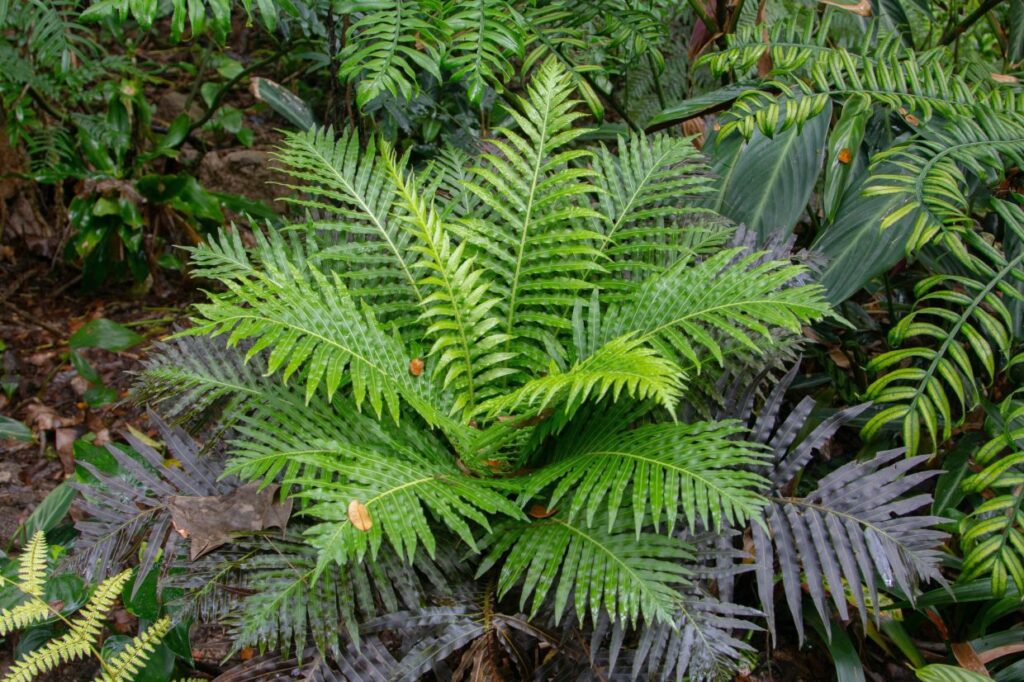
A groundbreaking discovery by a Chinese-led team of scientists has revealed the presence of naturally formed rare earth minerals in a living plant, marking a world first. This innovative finding, which involves a fern, offers a potential “green circular model” for extracting high-value rare earths, according to the Guangzhou Institute of Geochemistry, part of the Chinese Academy of Sciences.
The team announced that they had identified nanoscale monazite within the plant, a discovery that “opens new possibilities for the direct recovery of functional rare earth element materials.” This breakthrough was published in the peer-reviewed journal Environmental Science & Technology earlier this month.
Phytomining: A Sustainable Approach
The researchers collaborated with an earth scientist from Virginia Tech in the United States to explore the potential of phytomining, a green method that uses hyperaccumulator plants to extract metals from soil. This underexplored strategy could provide a sustainable supply of rare earth elements, which are crucial for numerous high-tech applications.
Hyperaccumulators are plants capable of concentrating heavy metals or metalloids in their tissues at levels significantly higher than the surrounding soil. By cultivating these plants on metal-rich soils, phytomining allows for the recovery of target metals from harvested biomass, reducing reliance on traditional mining methods and mitigating associated environmental and geopolitical risks.
The Significance of Monazite
Monazite, a phosphate mineral rich in rare earth elements like cerium, lanthanum, and neodymium, typically forms under extreme conditions of high pressure and temperature. However, the researchers found that plants could facilitate mineralization under ambient Earth-surface conditions, offering an alternative pathway for monazite formation.
The mineral’s high melting point, excellent optical emissivity, and resistance to corrosion and radiation damage make it ideal for applications such as coatings, lasers, and radioactive waste management. The discovery of monazite in plants could revolutionize the way these materials are sourced.
Research Methodology and Findings
For the study, the team collected samples of the evergreen fern Blechnum orientale, a known rare earth hyperaccumulator, from rare earth deposits in Guangzhou, southern China. Their analysis revealed that rare earth elements were concentrated primarily in the pinna, followed by the root system and leaf stalk.
The minerals crystallized within extracellular tissues, preventing non-nutrient elements from entering cells and detoxifying the plant. The researchers likened the monazite formation process to a chemical garden, where plant-like structures form when a metal-salt seed interacts with an aqueous solution containing anions.
“This phenomenon is the newly recognized occurrence of a chemical garden in a plant, driven by the high local concentration of metal salts (rare earth element and phosphate) in an aqueous environment,” the researchers wrote.
Implications and Future Prospects
The Guangzhou Institute of Geochemistry emphasized that this study offers “a new path for the sustainable use of rare earth resources.” By planting hyperaccumulator plants, high-value rare earths can be recovered while simultaneously remediating polluted soil and restoring the ecology of rare earth tailings, realizing a green circular model of “remediation and recycling at the same time.”
This discovery could have profound implications for the rare earth industry, which is often criticized for its environmental impact. The ability to extract these elements sustainably from plants may pave the way for more environmentally friendly practices in the sector.
As the world continues to seek sustainable solutions for resource extraction, the findings from this study could serve as a catalyst for further research into plant-based mining methods. The potential for phytomining to contribute to a greener future is significant, offering hope for a more sustainable approach to meeting the global demand for rare earth elements.





